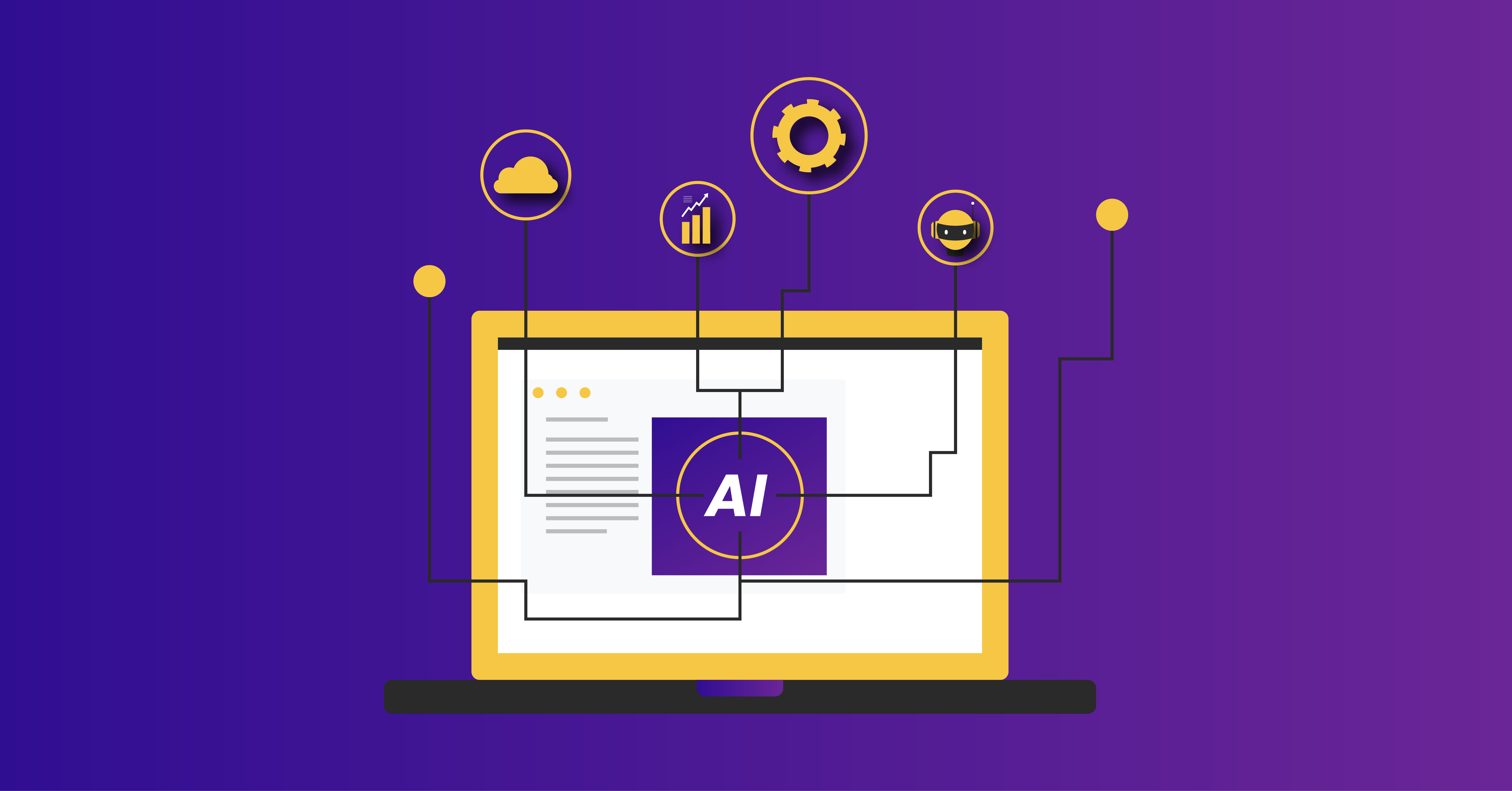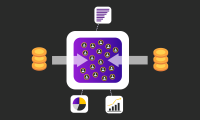Role of AI and ML in Programmatic Advertising
For over a decade, the power duo of AI (Artificial Intelligence) and ML (Machine Learning) has catalyzed the success of programmatic advertising. Now, with the recent launch of generative AI by Google, businesses have the potential to unlock their true scale. These groundbreaking technologies of AI and ML have transformed the way advertisers and publishers connect with their audiences in a hyperconnected digital world. They have brought about a revolution in how ads are targeted, delivered, and optimized, propelling the industry to new heights of efficiency and effectiveness.
Let’s delve deeper into how AI and ML have become the driving force behind the ever-evolving landscape of programmatic advertising.
What is AI in marketing and advertising?
AI can be defined as the science of making machines smart, enabling them to perform tasks that typically require human intelligence, but with greater precision and efficiency. It has become a transformative force in the field of programmatic advertising. It enables machines to perform intellectual tasks that were once exclusive to humans.
AI works on patterns in advertising. One of the fundamental capabilities of AI is its ability to analyze vast amounts of data, detect patterns, and make predictions based on those patterns. In the context of advertising, AI algorithms can analyze data such as consumer behavior, preferences, demographics, and past campaign performance to identify patterns and extract valuable insights.
By recognizing patterns in consumer data, AI can help marketers understand audience segments, identify trends, and predict consumer behavior. This allows advertisers to optimize their targeting strategies, create more relevant and personalized ad experiences, and ultimately improve campaign effectiveness.
What is an example of AI and ML in advertising?
In today’s consumer landscape, personalized brand experiences have become increasingly valuable. Customers no longer wish to be treated as mere numbers; they crave human-like interactions. To meet this demand, brands are leveraging the power of AI to transform data into creative ideas and deliver tailored approaches to their consumers. A notable example in this regard is Buzzfeed.
Buzzfeed, renowned for its captivating quizzes, has taken its experience to the next level by incorporating AI into its content creation. Collaborating between their human writers and “Buzzy the Robot,” the website’s AI creative assistant, Buzzfeed has introduced a series of AI-generated quizzes. These quizzes go beyond mere entertainment; they can now generate customized grocery lists for users or even craft personalized movie scenarios, casting users as the main characters based on their quiz responses.
What is ML in marketing and advertising?
AI has become a “suitcase word” that it is often used as a broad and encompassing term that covers a wide range of technologies, techniques, and applications. The term “AI” is often used to refer to various subfields and branches of artificial intelligence, including machine learning.
ML is a specific approach within AI that focuses on developing algorithms and models that enable machines to learn from data and make predictions or take actions without being explicitly programmed. ML algorithms are designed to recognize patterns, identify trends, and make predictions based on the patterns observed in the data. This learning process enables machines to perform tasks and make decisions with greater accuracy and efficiency.
What is an example of ML in advertising?
An example of ML in advertising is the use of recommendation systems. Many online platforms, such as e-commerce websites, streaming services, and social media platforms, employ ML algorithms to provide personalized recommendations to users.
For instance, platforms like Amazon and Netflix use ML to recommend products or movies/shows to users based on their browsing and viewing history, as well as similar users’ preferences. This personalization enhances the user experience and increases the likelihood of conversion or engagement.
What are the benefits of AI and ML in advertising?
The benefits of AI in advertising can be observed through its diverse applications in enhancing targeting, personalization, optimization, and campaign management. Here are some key ways in which AI is utilized in the advertising industry:
- Enhanced audience targeting
AI and ML algorithms analyze vast amounts of user data, enabling advertisers to precisely target specific audience segments. This results in delivering more relevant and personalized ads, leading to higher engagement and conversion rates.
- Optimized ad campaigns
AI and ML continuously analyze and adjust various parameters like ad placements, bidding strategies, and creative elements. This optimization maximizes campaign performance, ensuring ads are shown to the right audience at the right time, ultimately maximizing ad revenue for publishers.
- Personalization and customization
AI and Ml in programmatic advertising enable dynamic content creation and customization based on user data. This level of personalization improves user experience, increases CPM (cost per thousand impressions) for publishers, and drives higher user engagement and conversions.
- Predictive analytics
By leveraging historical data and machine learning techniques, AI predicts future consumer behavior, ad performance, and ad tech trends. Tools such as Google Analytics 4 enable publishers and advertisers to make data-driven decisions, allocate resources effectively, and stay competitive in a rapidly changing landscape.
- Improved content creation
The advent of AI has revolutionized content and ad creation in advertising such as the addition of generative AI in Google Ads and Search. This technology analyzes consumer preferences and creates tailored creatives that resonate with the target audience, resulting in higher engagement and ROI.
- Fraud detection and prevention
AI and ML algorithms can identify and prevent ad fraud by detecting suspicious activities and patterns in real-time. This helps advertisers protect their ad budgets and ensure that their investments are utilized for legitimate and valuable impressions.
- Customer sentiment analysis and reporting
ML techniques, including natural language processing, analyze customer feedback, social media posts, and online reviews to understand sentiment toward brands or products. This helps in monitoring brand reputation and shaping marketing strategies. Additionally, AI-powered reporting tools, such as Google Analytics 4, utilize ML algorithms to provide in-depth insights and analytics.
- Real-time bidding and ad placement
AI algorithms optimize ad campaigns by continuously analyzing and adjusting parameters such as bidding strategies and ad placements. This ensures that ads are shown to the right audience at the right time, maximizing performance.
What are the challenges of AI and ML in advertising?
- Lack of high-quality data
A major challenge faced by small publishers and advertisers in harnessing the full potential of AI and ML in advertising is the limited access to high-quality and diverse datasets. Without extensive user data or access to first-party data, they often rely on third-party data providers, which may not perfectly align with their target audience or lack accuracy. This reliance on insufficient data hampers precise targeting and can lead to lower campaign effectiveness.
Furthermore, even when data is accessible, ensuring its quality and accuracy becomes crucial. Incomplete or outdated data can result in biased insights and suboptimal decision-making. Cleaning and validating data to maintain its quality requires resources and expertise that may be lacking for small advertisers. Overcoming these challenges and obtaining sufficient, reliable, and accurate data is essential to fully leverage the power of AI and ML in advertising strategies.
- Training and optimization
One of the key challenges in implementing AI and ML techniques in advertising is the requirement for specialized programming skills and expertise. Small publishers and advertisers often lack the necessary knowledge and resources to effectively develop and deploy ML models.
The complexity of the algorithms and frameworks used in AI and ML demands a deep understanding of data processing, feature engineering, model selection, and optimization. Training ML models on relevant datasets is crucial for learning patterns and making accurate predictions. This involves data preprocessing, feature extraction, model training, and hyperparameter optimization.
- Data Collection and usage
The use of AI and ML in advertising can raise concerns about privacy, even in the context of the advent of first-party cookies and data. AI and ML algorithms rely on vast amounts of data to make accurate predictions and optimize advertising campaigns. This data may include personal information, browsing history, and behavioral patterns. If not handled responsibly, the collection and usage of such data can infringe upon users’ privacy.
AI and ML techniques excel at creating detailed user profiles by analyzing various data points. While this enables personalized advertising experiences, it also raises concerns about the extent of profiling and the potential for intrusiveness.
- Data biases
AI and ML algorithms are trained on historical data, which may contain inherent biases. If the training data reflects societal biases or discriminatory practices, the algorithms can unintentionally perpetuate and amplify those biases in the advertising process. For example, if historical data contains biased demographic patterns, the algorithms may inadvertently target or exclude certain groups based on those biases.
Similarly, AI and ML models learn from user interactions and feedback. If biased feedback is given by users, it can reinforce and perpetuate the existing biases in the system. For example, if users with biased preferences interact more with certain types of ads, the algorithm may continue to show similar content, thereby creating a feedback loop that reinforces discriminatory patterns.
What are the solutions for these challenges of AI and ML in advertising?
- Brand safety practices
Without proper brand safety measures, there is a risk of ads being displayed in inappropriate or harmful contexts. AI and ML technologies can be used to automate ad placements and targeting mitigating the risks of ads being displayed in inappropriate or harmful contexts. While AI and ML algorithms can optimize ad targeting and delivery, it is essential to combine them with brand safety measures to avoid potential pitfalls.
- Transparency
Transparency is vital in addressing the challenges of AI and ML in advertising. It promotes trust, accountability, and ethical practices within the ecosystem. This includes being transparent about data usage, providing insights into algorithmic decision-making, disclosing advertisements clearly, and embracing third-party audits. It establishes a foundation of integrity, fosters fairness, and drives the industry towards responsible and ethical AI and ML practices in advertising.
- Efficient Ad Platforms
Partnering with the right ad platforms, including ad networks, ad servers, and ad exchanges, can provide solutions for the challenges of AI and ML in advertising. These platforms often offer advanced targeting capabilities, data management tools, and optimization algorithms that leverage AI and ML technologies. By leveraging these platforms, advertisers and publishers can access a wider range of data sources, target specific audiences more effectively, and optimize their campaigns based on real-time insights.
While AI and ML have already made significant strides in programmatic advertising, it is safe to say that they are still considered a work in progress. As the advertising landscape and consumer behavior evolve, AI and ML in programmatic advertising will continue to adapt and innovate to meet the changing needs and expectations of advertisers and consumers alike.




Leave a Reply